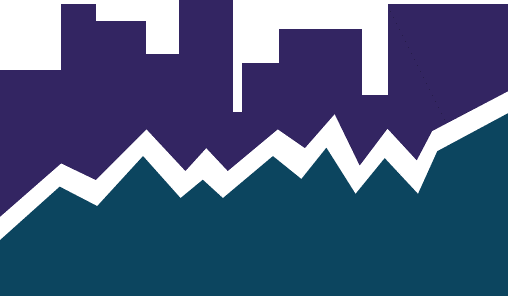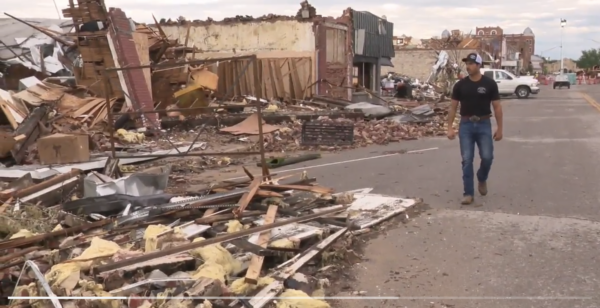The Monday Morning Quarterback
A quick analysis of important economic data released over the last week
By Elliot D. Pollack & Co. | Rose Law Group Reporter
Who is to blame for inflation?
Much has been in the media lately about inflation. In October, the Consumer Price Index (CPI) soared 6.2% from a year ago — the biggest jump since 1990. It is dragging down President Biden’s approval ratings and fueling discontent. So how did we get here?
To start with, inflation is simply too much money chasing too few goods. It is a supply and demand issue.
With COVID-19 cases rising in early 2020, the U.S. economy collapsed as lockdowns took effect. Businesses closed or cut hours and consumers stayed home as a health precaution. The U.S. lost 22 million jobs, companies cut investment, and economic output plunged. No one knew how long it would last.
It turned out to be the shortest recession on record – about two to three months. The economy roared back, fueled by massive government spending, emergency moves by the Fed, and ultimately by the rollout of vaccines. Suddenly, businesses had to scramble to meet demand. They could not hire fast enough or train new employees to fill customer orders. Have you tried to speak to an airline representative on the phone? Wait times are 3 to 4 hours; sometimes they offer to call you back in 8 hours. The result: a shortage of goods and services which has resulted in higher prices.
So who is to blame?
The government. The administration passed a $1.9 trillion package of relief that included $1,400 checks to most households on top of a $900 billion package passed three months earlier. That’s $2.8 trillion coursing through the economy, some of which replaced lost incomes, but some also ended up in savings to be spent later.
The Fed. They did their part in ultra-easy monetary policy and focusing on the job market. They still insist inflation is transitory, and they are starting to reduce their monthly bond purchases. The Fed’s benchmark interest rate may stay at zero for another year. For now, they are not pre-empting the inflation surge by deliberately slowing the economy.
Corporate America: Most companies saw a severe recession and cut back production and laid off workers. What seemed prudent at the time turned out to be wrong. Pent-up demand for goods is now stronger than ever.
It is difficult to predict the future and the pandemic was something no one foresaw. It was also a circumstance we never dealt with before. It has upended many people’s work routines and how we even view work. Could policymakers have foreseen the problems with reopening the economy? Probably not. For the most part, they erred on the side of caution. Unfortunately, we may be dealing with this for a while.
In other news:
U.S. Snapshot:
- The Leading Economic Index grew by 0.9% in October. This was a sharp increase from 0.1% growth seen in September. This increase signals the economic expansion should continue into 2022 despite rising prices and supply chain bottlenecks.
- U.S. retail sales beat expectations and surged 1.7% in October. Despite consumers continuing worry regarding inflation, they remain willing to buy. American consumers started shopping earlier, likely to avoid possible shipping delays or low inventory of products closer to the holiday season. While the majority of the gains are due to increased consumer demand, a portion is also due to price increases seen across the U.S.
- Industrial production and capacity utilization both beat expectations in October. Both indices increased 1.6% after declining in September.
- NAHB’s Housing Market Index increased to 83 in November from 80 in October. The increase in confidence remains a positive sign for home builders despite labor and material shortages. Additionally, home builders cited lack of lot availability as another important issue they are now facing.
- Housing starts declined across the U.S., according to the U.S. Census Bureau’s latest release. Total starts declined 0.7% to a SAAR of 1.52 million in October. Single family starts had an even larger decline of 3.9%. In contrast, total permits saw an increase of 4.0% while single family permits increased 2.7%.
Arizona Snapshot:
- Employment was up in Arizona and its two major metros in October. Arizona saw an increase of 30,400 jobs with Professional & Business Services (8,400), Leisure & Hospitality (8,100) and Trade, Transportation & Utilities (8,000) having the largest contributions. Only Educational & Health Services experienced a decline. Greater Phoenix and Greater Tucson grew by 22,400 jobs and 3,200 jobs, respectively.
- The October data from RLBrownReports.com was released and the trend for permits continued.
- In Greater Phoenix, the number of permits declined 29.8% from a year ago following a decline of 27.2% in September. Year-to-date, permits are still up 11.4% despite the recent slowdown. Resales were up 18.1% while new home closings were down 0.8% for the period.
- In Greater Tucson, both permits and new home sales fell for the month and from a year ago. The median sales price for new homes increased 12.9% from a year ago and is up 18.8% for resales.












